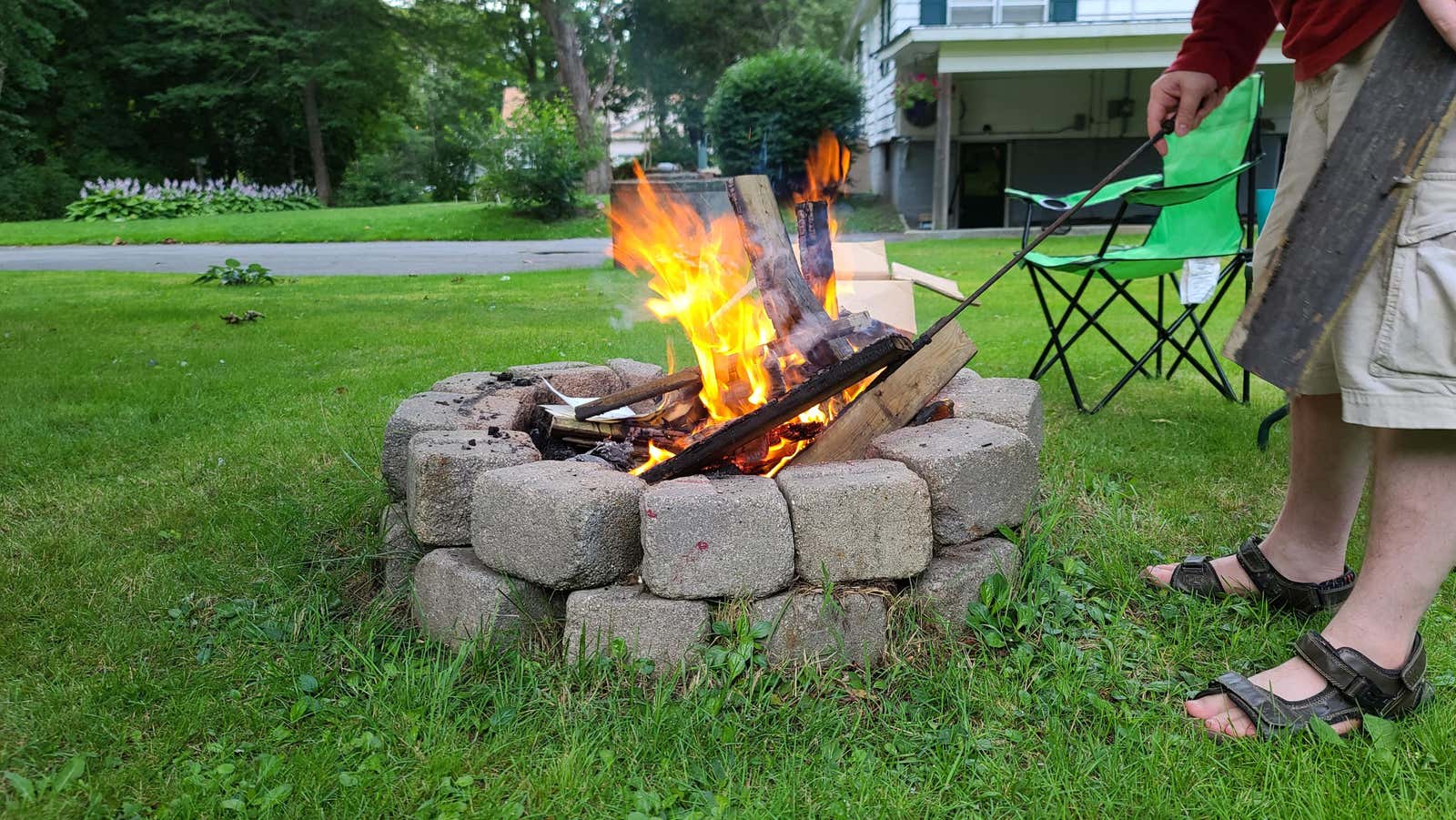How to Build a Fire Pit (so As Not to Burn the Neighborhood)

A fire pit is a nice addition to any backyard. It can become a central gathering place and extend the warm season, keeping it cozy from spring to autumn. Building a fire pit on your own is a tempting project, but there are some things you should consider before taking it on – for your safety and the safety of your neighbors.
Check local regulations first
The first thing to do when setting up a fire pit is to read local ordinances or any rules governing outdoor burns that may affect your plans. In addition to checking with your local planning office, you should also look at your act. Once you clear your fire pit of authorities, you can choose materials.
Choose materials for your campfire
Fire bricks should ideally be used for the inside of the fire pit because they are insulating. Firebrick comes in many colors and even shapes, but it’s not the part people will see the most, so don’t worry too much about it. Choose refractory bricks for safety reasons, not aesthetics.
For the exterior of the pit and the area around it, any type of refractory stone is suitable. You will need enough firebrick to make a hole 36 to 44 inches in diameter and 12 to 24 inches high. This will give you a good place to prop your feet and act as a barrier against some sparks. You will need enough material for the outside of your hole so that you have a fireproof zone around the hole that is at least three feet wide. For added safety, you should also consider a screen cover to keep sparks to a minimum.
Another addition that can help keep your fire pit safe and functional is a steel ring , which will prevent your refractory brick from drying out too much. This can extend the life of your fire pit and make it more durable. They come in a variety of shapes, so you can choose the one that best suits your space.
Find a good spot and build your hole
Once you’ve chosen your materials, you’ll need to choose a location for your campfire. Think wind, flammable materials, and seating space. Choose a location with wind protection, consider the distance between the pit and anything that could catch fire, like your trees or your house, and make sure you have enough seating space. The seats need a little space between them and the pit, but they are also the main point of this.
With all of this in mind, under a tree or an awning, a patio is not the best place to place a fire. In addition, you should choose a place that is good for company and invites you to spend time outdoors.
It is not necessary to dig a hole for a fire, but it is important to clear the area of grass and weeds. If you choose a level area, you can build a structure for a campfire right out of the ground. If you choose to dig a hole for your hole, call 811 to make sure there are no utilities in your way. Then, using a shovel , dig a hole of the size and shape you want the fire hole to be, plus the thickness of your firebricks, 12 to 24 inches deep. If you are using a steel ring, you can use that as a guide for the approximate hole dimensions. Finally, compact the soil so that you have a good inside surface for laying the refractory bricks.
Alternatives to building your own fire pit
An alternative to a wood fire pit is a propane fire pit. You can get one of these as a kit or pre-made, and it’s a good option if you don’t want to build and carry rocks around a lot. It may be safer if yours is windy because they don’t cause sparks. In addition, beautiful decorative stones or recycled glass can be used as a basis for them. Another alternative to a DIY fire pit is a portable one that can be placed on the stove. They are easier to use and do not require permissions. You will still need to remove grass and any other flammable material from where you plan to set up the fire pit.
Safety First
Protective equipment is definitely important to keep on hand when you’re using your fire pit. Having a fire extinguisher appropriate for the type of fuel you are using and a hose connected at the ready just in case is a must. It is also important to be mindful of weather or dry conditions. Check local scorching laws before lighting a fire to be on the safe side.